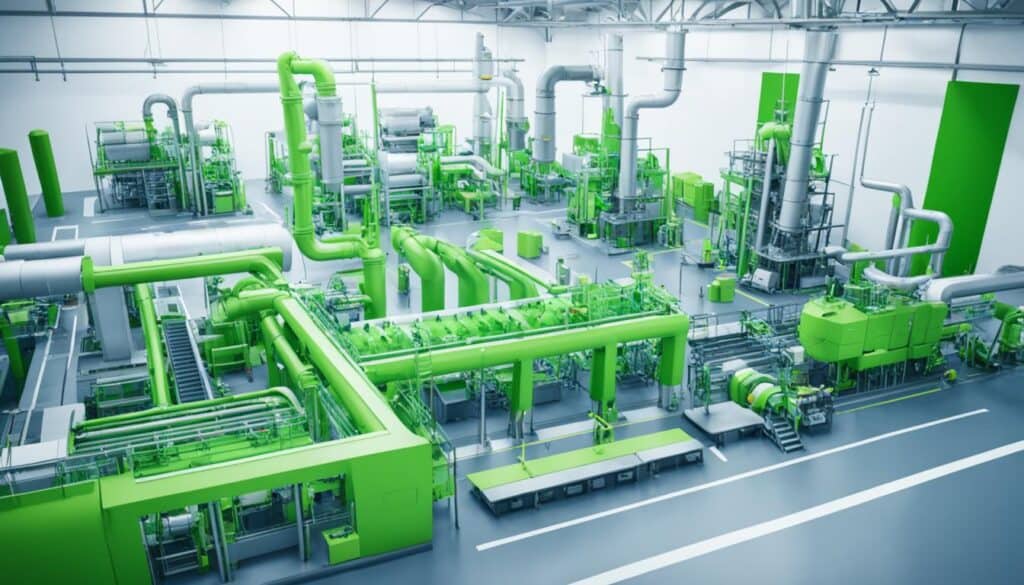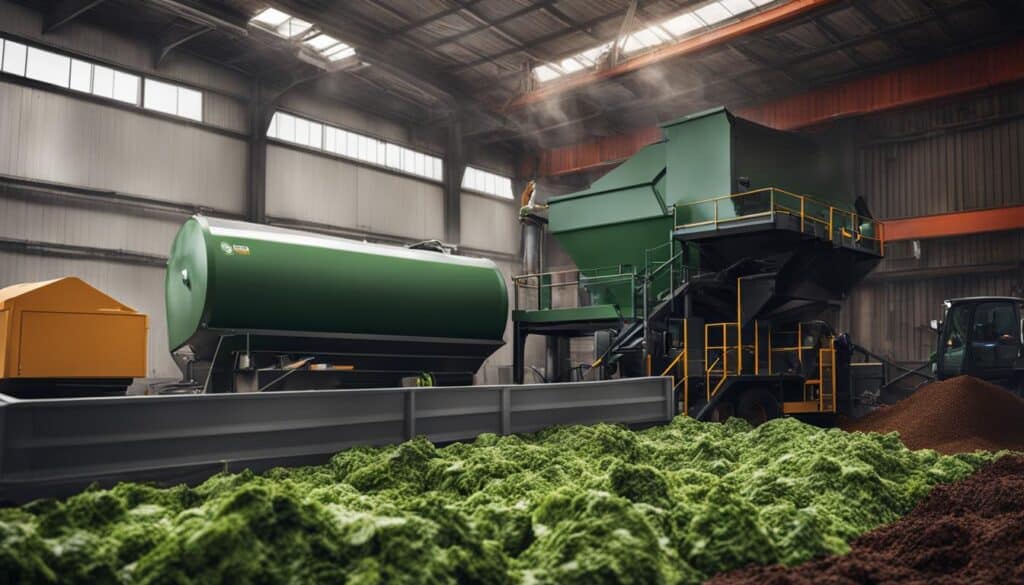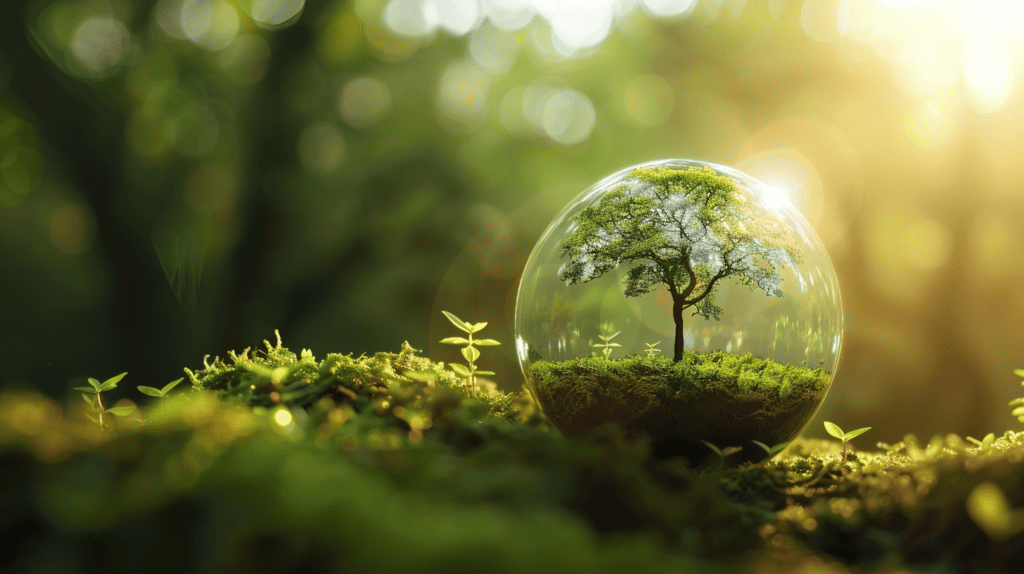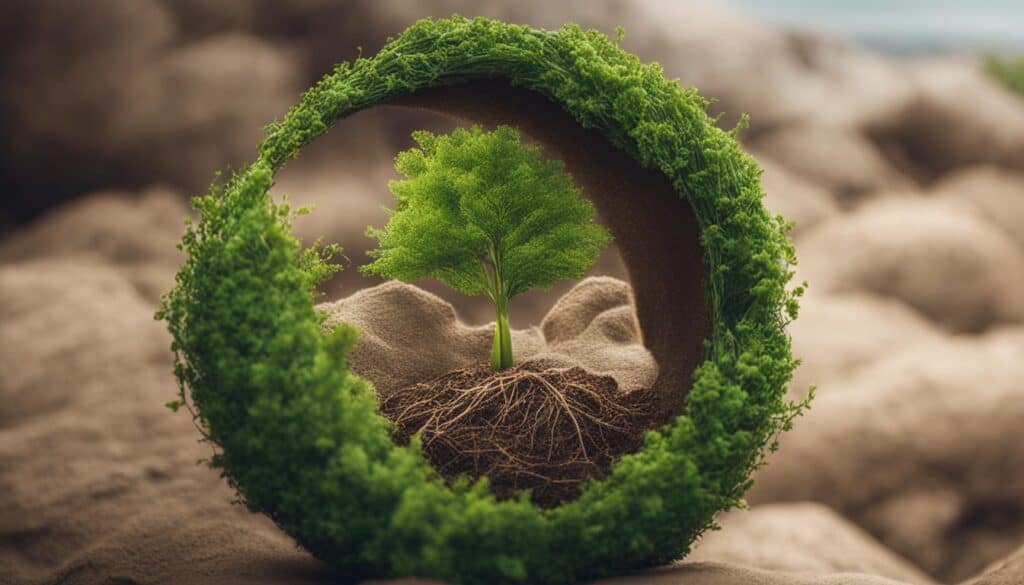As someone who remains mindful of the interaction we have with our environment, it’s hard to ignore the growing concerns around the sustainability of our day-to-day products. As a result, an increasing spotlight is being placed on the life cycle assessment of biodegradable products. This process, also known as an LCA, provides clear insight into their environmental profile and overall sustainability assessment.
The importance of LCA methodology in assessing crucial factors such as resource usage and waste management can’t be overstressed. It helps in making informed decisions on the habitability of the planet for future generations.
I recently came across a case study on sustainability from the University of Tennessee-Knoxville that highlighted a relevant and increasingly popular product: coffee pods. Consistently accused of contributing negatively to environmental pollution due to the copious plastic waste they produce, plastic coffee pods and their end-of-life options have generated significant complaints.
However, this case study shows a promising alternative. This alternative lies in biodegradable packaging, specifically, compostable coffee pods! Providing not only an efficient disposal option but also a solution that feeds back positively into our environment.
Key Takeaways
- Compostable coffee pods offer a promising alternative to traditional plastic pods.
- Life Cycle Assessment (LCA) provides crucial data on a product’s environmental impact from production to disposal.
- The shift towards biodegradable products supports a circular economy which is sustainable.
- Industrially compostable packaging aligns with environmental objectives and reduces pollution.
- Sustainability assessment is necessary to make informed decisions for a healthier planet.
The Rise of Single-Serve Coffee Pods and Sustainability Concerns
In the past decade, we’ve seen a significant rise in the popularity of single-serve coffee machines. Their quick and convenient operation has led to their widespread use, particularly in corporate and domestic settings. However, this convenience comes at an environmental cost due to the increasing waste generated by the accompanying plastic coffee pods.
The introduction of these disposable coffee pods, which are often made from mixed materials and categorized as “other plastics”, has spurred manifold sustainability concerns. Only 6-9% of the total plastic waste gets recycled in the US, prompting a growing awareness of the need for a comprehensive life cycle assessment of such products.
Due to their composition of several layers of different materials, traditional coffee pods are incredibly hard to recycle, resulting in tragic pile-ups in landfills and oceans. The environmental impact is far-reaching, with negative consequences on marine life and disruptions in the ecological balance.
Fortunately, an alternative solution has emerged – biodegradable plastics. Biodegradable alternatives to traditional plastic, such as compostable coffee pods, could help mitigate the sustainability concerns posed by conventional pods. The move toward such materials not only considers the full life cycle of the product, diligently reducing the environmental impact, but also aligns with the concept of a circular economy, thus promoting sustainability in daily coffee consumption.
In essence, the journey from extracting the raw materials to manufacturing the end product, and all the stages in between, culminates in the product’s ultimate disposal. This complete life cycle of single-serve coffee pods must be assessed and implored for improvements to minimise the environmental footprint. So, the next time you enjoy a cup of coffee brewed through a single-serve machine, remember to take a moment and think about the environmental implications of your choice.
Comparative Life Cycle Assessment of Conventional vs. Biodegradable Coffee Pods
In our quest to understand the environmental burden of coffee pods, a Comparative Life Cycle Assessment (LCA) is considered one of the most informative and effective tools. It helps to quantify the environmental impacts of both conventional and biodegradable coffee pods, allowing us to make informed decisions on product choice.
Overview of Life Cycle Assessment Methodology
Life Cycle Assessment or LCA is a methodology that assesses the environmental impacts of a product from its production through to disposal. This comprehensive approach considers every stage of the product lifecycle, including raw material acquisition, processing, manufacturing, distribution, use, and end-of-life management. It provides a holistic viewpoint, ensuring no impact is overlooked.
Calculating Environmental Impacts in a University Case Study
A case study was conducted at the University of Tennessee–Knoxville. Here, LCA was implemented to compare the environmental impacts of conventional plastic coffee pods against their compostable alternatives. The study examined embodied energy, the total energy required for the entire lifecycle of a product, and various other environmental impacts. It showcased that composting is a feasible and more sustainable option for the disposal of coffee pods. The complete degradation of compostable pods was observed within 46 days, significantly reducing their environmental footprint compared to the conventional plastic counterparts that take centuries to decompose.
Outcomes of the Comparative LCA
The outcomes of this comparative LCA shed some promising light. Compostable coffee pods demonstrated their superiority over conventional ones in terms of decreased environmental impact and associated cost savings in waste management. Adopting compostable coffee pods can therefore alleviate the burden on our ecosystems and provide an economical solution for businesses seeking to reduce their environmental footprint. Thus, adopting biodegradable products acts as a catalyst for achieving sustainability goals and enhances the corporate image and responsibility towards environmental preservation.
Understanding Bio-based Polymers in Product Manufacturing

As we delve deeper into the world of biodegradable plastics and bio-based polymers, the potential they offer aligns beautifully with the principles of product manufacturing in an eco-conscious world. Disrupting the traditional route of plastic production, these bioderived materials introduce substantial improvements that address the urgent concerns of our planet.
By implementing the use of bio-based polymers such as polylactic acid (PLA) in the creation of plastic products, we engage a new, promising era of bioplastics production.
“Bio-based polymers like PLA and bio-PET are derived from renewable biomass sources such as corn starch or sugarcane, assistant in mitigating the detrimental environmental impact affiliated with petroleum-based plastics.”
These biodegradable plastics are remarkable in offering an end-of-life solution that’s mindfully rooted in a holistic life cycle impact assessment approach.
Let’s tackle the role of traditional thermoplastics like polypropylene in plastic production. It’s undeniable that they enable a certain degree of recycling opportunities; however, they’re shadowed by their sustainable successors – bio-based polymers.
By making a shift towards biobased alternatives like PLA, we facilitate a more environmentally responsible way of plastic recycling, i.e., composting. Composting biopolymers not only diverts a substantial amount of waste away from the landfills but also transforms this ‘waste’ into a valuable product during its end-of-life phase – compost, contributing to improved soil health and overall ecological wellbeing.
| Polypropylene | Polylactic Acid (PLA) |
|---|---|
| Petroleum-based | Plant-based |
| Limited to recycling | Can be composted |
| Contributes to landfill waste | Transforms into valuable compost for soil |
| Life-cycle not circular | Aligns with circular economy principles |
The environmental and practical advantages of leveraging bio-based polymers in product manufacturing are manifold, seeding a promising new direction in the way we perceive, produce, and dispose of plastic products.
As our understanding of sustainable alternatives matures and deepens, we’re hopeful to see more and more industries adopting biodegradable plastics and thus becoming active participants in shaping a greener, more sustainable future.
Industrial Composting as an End-of-Life Option
As the push for environmental sustainability continues to pick up pace, the exploration of end-of-life options for biodegradable products becomes ever more significant. One such option garnering attention is industrial composting, a process that effectively diverts waste from landfills and transforms it into a beneficial agricultural product — compost.

The Significance of Industrial-Scale Composting Facilities
Industrial-scale composting facilities play a pivotal role in managing waste and supporting environmentally-friendly practices. These facilities are designed to expedite the degradation of organic substances in a controlled environment. By providing optimal conditions of temperature, moisture, and oxygen, industrial-scale composting speeds up natural decay processes to deal with large volumes of waste in a shorter span of time. This is particularly important as it makes composting feasible for mass-produced compostable packaging.
Composting vs. Landfilling: Comparative Benefits
The advantages of composting when compared to landfilling are considerable. Whereas landfilling simply buries waste, contributing significantly to greenhouse gas emissions and potentially contaminating groundwater, composting is about creating a value-added product — compost. This nutrient-rich amendment enriches the soil and supports plant growth, creating a closed-loop system that enhances environmental sustainability.
From a waste management perspective, composting is also preferable. Composting facilities can significantly reduce the volume of waste headed for landfills, easing pressure on these otherwise overloaded systems. As demand for compostable products such as biodegradable coffee pods increases, the significance of such waste management solutions only grows.
46 Days to Complete Degradation
A telling example of the composting benefits of biodegradable products is the 46-day degradation period of compostable coffee pods. In marked contrast to their non-compostable counterparts, which are likely to persist in landfill conditions for centuries, these compostable alternatives can break down fully in a little over a month when processed in industrial composting facilities. This rapid degradation is a testament to the potential of industrial composting as a viable end-of-life option for biodegradable products.
In light of these benefits, it’s clear that supporting the expansion and utilization of composting facilities is a critical part of stepping up our collective drive toward true environmental sustainability.
Demystifying Life Cycle Inventory (LCI) and Impact Assessment (LCIA)
In the sphere of life-cycle assessment, two crucial terms warrant our understanding: Life Cycle Inventory (LCI) and Life Cycle Impact Assessment (LCIA). These key components form the bedrock of the LCI methodology, providing a comprehensive picture of the environmental performance of a product.
At its core, a Life Cycle Inventory details every input and output related to a product’s life cycle. This exhaustive data collection drives our understanding of the environmental impact associated with a product, from its creation to its disposal.
The Life Cycle Impact Assessment, on the other hand, plays a different yet complementary role. The LCIA interprets the data collected in the LCI to evaluate the potential environmental impacts and the product’s ecological footprint. With the impact assessment method, we can better gauge the product’s total environmental impact, from the extraction of raw materials to its end-of-life disposal.
Decoding these terms helps us appreciate that both the LCI and LCIA play a fundamental role in the assessment of environmental impacts. With this deeper understanding, we’re better positioned to drive sustainability improvements in both production and waste management practices.
“Understanding the environmental performance of a product over its entire life cycle provides a clear picture of the factors contributing to its overall environmental impact. This knowledge enables us to devise strategies for reducing the product’s environmental footprint.”
In conclusion, understanding the Life Cycle Inventory (LCI) and Life Cycle Impact Assessment (LCIA) is central to our approach in maximizing environmental performance and minimizing environmental impacts. This knowledge enables us to tap into the power of the life-cycle assessment in our fight for a more sustainable future.
Life Cycle Assessment of Biodegradable Products
In the realm of sustainable products, Life Cycle Assessment (LCA) studies are pivotal in determining the environmental efficiency of alternatives such as biodegradable products. Most prominently, LCA studies measure the feasibility and sustainability of options like compostable coffee pods, which present a compelling solution to the persistent problem of plastic waste.

Determining the Feasibility of Compostable Pods
Compostable coffee pods, predominantly composed of biodegradable polymers, offer a practical and feasible alternative to their conventional plastic counterparts. The viability of such biodegradable options is greatly substantiated by a notable case study conducted by the University of Tennessee–Knoxville. Through intricate feasibility studies, they were able to accurately gauge the potential that these compostable products hold for the future of sustainable living.
Cost Savings and Environmental Benefits
The widespread usage of compostable coffee pods not only contributes vastly to minimizing harmful environmental impacts, but also results in remarkable cost savings. The University of Tennessee–Knoxville case study discovered that the replacement of regular plastic coffee pods with biodegradable alternatives led to a substantial 21% cost savings in waste disposal. Additionally, the composting process of these pods produced a nutrient-rich compost, reemphasizing the circular economy benefits of choosing compostable and biodegradable options. This reinstate the prominent environmental benefits we reap when gravitating towards more sustainable product alternatives.
Assessment of Environmental Certifications for Biodegradable Packaging
Certifications play a crucial role in the world of sustainability. They offer a practical directive to both manufacturers and consumers, reaffirming the legitimacy of the sustainability claims made by a product or a brand. In terms of biodegradable packaging, such commendations can significantly shape their popularity and acceptance across the industry.

Importance of Certifications in LCA Studies
Certifications particularly impact Life Cycle Assessment (LCA) studies. Being a comprehensive method for assessing the environmental impact of a product throughout its life cycle, from raw material extraction through processing, distribution, use, and disposal, LCAs are increasingly subsequent to environmental certifications. They lend credibility to the analysis, ensuring that the assessed products adhere to recognized sustainability certifications and standards.
Biodegradable Products Institute (BPI) Certification Overview
Consider the case of the Biodegradable Products Institute (BPI), an esteemed organization in the United States. The BPI certification is specifically devised for products fulfilling industrially compostable standards, such as the ASTM D6400 and D6868. These standards are rigorous and ensure products are capable of undergoing complete decomposition in a compost environment.
| Standards | Description |
|---|---|
| ASTM D6400 | Standard for compostability testing of plastics and products made from plastics. |
| ASTM D6868 | Standard for biodegradable plastics used as coatings on paper and other compostable substrates. |
Sustainability certifications like the BPI act as a seal of trust, enhancing consumer confidence and decision-making. By adhering to such certifications, manufacturers can also guarantee they are complying with practical, science-based environmental guidelines in their production and disposal practices.
Market and Customer Perspectives on Biodegradable and Compostable Products
As we delve into the market perspectives on biodegradable and compostable products, it’s clear that customer preferences play an essential role in driving the need for sustainable consumption. Recently, I’ve noticed an uplifting shift in consumers gravitating towards environmentally friendly options. Instead of one-use plastic items, there’s an increasing demand for biodegradable products—that’s one step towards a more sustainable world!
I believe customer preferences for sustainability are fundamentally reshaping the market for products like compostable coffee pods. No longer are people satisfied with the ‘use it and throw it’ attitude, they are seeking ways to reduce their environmental footprint. The growing preference for convenience married with sustainability begs businesses to reevaluate their product offerings, catering to a more responsible and eco-conscious customer base.
This promising shift in consumer behavior underlines the importance of making eco-friendly products mainstream. The success of compostable coffee pods is a testament to this shift. What initially seemed to be a niche product is now resonating with broad audiences, showing how the market can adapt to meet the rising demand for sustainable consumption. It emphasizes how each of us can make a difference, turning everyday actions like drinking coffee into a step towards a greener future.
FAQ on Life Cycle Assessment of Biodegradable Products
Q: What is the significance of bio-based plastics in the Life Cycle Assessment of Biodegradable Products?
A: Bio-based plastics play a vital role in the life cycle assessment of biodegradable products as they are designed to reduce environmental impacts. These materials have a lower carbon footprint throughout their life cycle compared with traditional petrochemical plastics, especially when considering life cycle greenhouse gas emissions. The production of bioplastics, such as pla production, offers a sustainable alternative that contributes towards a circular economy model.
Q: How does the life cycle of pla compare to that of fossil-based plastic?
A: The life cycle of PLA (polylactic acid), a type of bio-based plastic, is more environmentally friendly when compared to fossil-based plastic. Using life cycle assessment methodologies, the assessment of PLAs shows a significantly lower environmental impact. This includes lower greenhouse gas emissions during production of PLA and the potential for biodegradation at the end of the product use phase, unlike fossil-based plastics.
Q: How effective are bioplastics as a packaging material?
A: Bioplastics have been shown to be highly effective as a packaging material. They can be used in a variety of applications, including food packaging, such as in acid trays for fresh-food packaging, and water bottles. Due to their design, the use of bioplastics in packaging reduces environmental impacts throughout the product life cycle when compared to conventional plastic packaging, based on comprehensive life cycle assessment studies.
Q: How is the production of bioplastics impacting sustainability?
A: The production of bioplastics contributes positively to sustainability by reducing dependence on fossil fuel resources. Bioplastics are produced using renewable resources, which contribute less to greenhouse gas emissions compared to petrochemical plastics. They also offer the opportunity for recycling and biodegradation at end of life, thereby enabling a more circular economy and overall reduced environmental impact, according to life cycle assessment and management studies.
Q: How does a life cycle assessment of bioplastics compare to a life cycle assessment for polylactic acid?
A: The life cycle assessment of bioplastics and the life cycle assessment for polylactic acid are quite similar, as polylactic acid (PLA) is a type of bioplastic. Both assessments look at the environmental impacts throughout the entire life cycle, from production to disposal. PLA is often used as a case study in research because of its wide use in packaging, and assessments have generally shown its benefits in terms of reduced environmental impacts.
Q: What does the literature review say about the use of bio-based plastics?
A: A comprehensive literature review reveals a growing consensus on the benefits of using bio-based plastics. Such benefits include reduced dependency on fossil fuels, decreased greenhouse gas emissions during production, potential for biodegradation at end of life, and overall lower environmental impacts through the product’s life cycle. The shift from petrochemical plastics to bioplastics signifies a move towards more sustainable practices in various industries, particularly in packaging.
Q: How could plastics in a circular economy model impact the life cycle assessment of biodegradable products?
A: The use of plastics in a circular economy model would significantly improve the life cycle assessment of biodegradable products. This model emphasizes waste reduction and recycling, which bioplastics like PLA can easily fit into due to their biodegradability. In this way, the environmental impact of products can be significantly reduced throughout their whole life cycle.
Q: What is the role of environmental impact assessment in the production of bioplastics?
A: The role of environmental impact assessment in the production of bioplastics is to evaluate their potential environmental effects throughout their life cycle, from production to disposal. This includes assessing their carbon footprint, water usage, and potential for pollution. It guides the sustainable design of bioplastics to ensure they contribute to a lower environmental profile compared to traditional plastics.
Q: How does bioplastic production compare to traditional petrochemical plastic production?
A: Bioplastic production is often more environmentally friendly than traditional fossil-based or petrochemical plastic production. One important aspect highlighted in life cycle assessments is the reduction in greenhouse gas emissions in the production of bioplastics. Bioplastics are also made from renewable resources which, when compared to petrochemical plastics, contributes to reduced environmental impacts over the whole life cycle.
Q: What is the objective of the Life Cycle Assessment of Biodegradable Products?
A: The objective of the Life Cycle Assessment of Biodegradable Products is to evaluate the environmental impacts associated with all the stages of a product’s life from-cradle-to-grave. It provides an understanding of how the production, use, and disposal stages of a product, such as bioplastics or petrochemical plastics, can be redesigned to enhance sustainability and reduce environmental impacts.





Leave a Reply